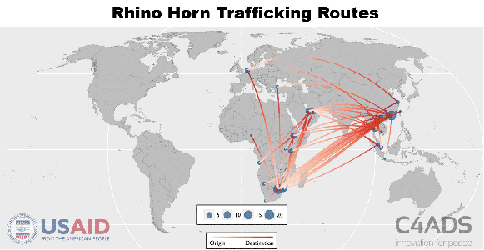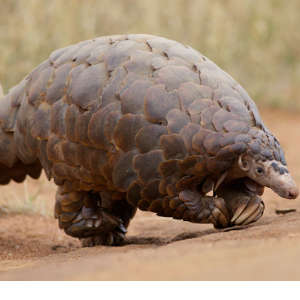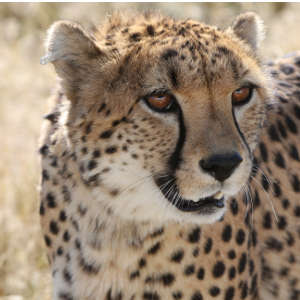The Missing Kingdom: Why Fungi Must Be Central to Conservation Strategy
28 December 2025
Published online 26 September 2018
Wildlife is trafficked under authorities’ noses through some of the region’s major airports.

USAID/C4ADS
Enlarge image
Titled ‘In Plane Sight: Wildlife Trafficking in the Air Transport Sector’, the report was produced by the C4ADS as part of the United States Agency for International Development Reducing Opportunities for Unlawful Transport of Endangered Species Partnership. It analysed global airport seizures of wildlife and wildlife products from 2009 to 2017, finding examples of trafficking in at least 136 countries worldwide.
The United Arab Emirates (UAE) witnessed 117 known ‘trafficking instances’ in the study period, representing the number of times illegal wildlife moved through an airport in a country, regardless of whether it was seized. This was the third highest in the world, after China, which recorded 387 trafficking instances, and Thailand, with 150 trafficking instances. Along with Kenya, the UAE plays a prominent role as a primary transit hub for wildlife movement between Africa and Asia.
Other major trafficking hubs in the region included airports in Doha, Cairo and Istanbul. Other cities in the region that appear in the data, although less frequently, include Beirut, Abu Dhabi, Riyadh, Damascus, Sharjah, Tel Aviv, Muscat and Antalya.
“In the Middle East, there seems to be a dangerous combination of [financial] availability and lack of government commitment.”
“The Arabian Gulf Countries and Egypt are hotspots for their convenient geographic location and frequent flights,” explains Mohamed Elsayed, regional director for the Middle East and North Africa at the International Fund for Animal Welfare (IFAW).
Middle Eastern airports are especially prominent for trafficking ivory, rhinoceros horns and pangolins, also known as scaly anteaters, and hunted for their blood and scales, which are used in traditional medicines, and their meat, which is a delicacy in countries like China. Dubai International Airport is a primary transit hub for birds and reptiles moving from Africa to Asia, and has also reported ivory seizures.

USAID/C4ADS
The most common ivory route in 2017 was from Harare in Zimbabwe to Hong Kong, transiting through Dubai International Airport. Egypt is also known for its sizeable unregulated domestic ivory market that caters to foreign buyers, according to Richard Thomas, communications coordinator at the Wildlife Trade Monitoring Network TRAFFIC.
Countries such as Iran, Kuwait, Qatar and the UAE are destinations for mammal trafficking. Around 75 per cent of seizures in the study period involved live animals like tiger cubs, lorises (an Asian primate), pythons and Javan gibbons (a South-East Asian ape).
The seizure data revealed the UAE is a demand market for reptiles, mostly Nile crocodiles. It has also been the most prominent transit and destination hub for known bird trafficking by air since 2009, due to a high demand for protected falcons and other birds, like grey parrots and lovebirds. The legal raptor trade in the region has led airlines like Qatar Airways, Etihad and Emirates to allow falcons in the main cabins of the aircraft as a result of cultural norms in the region, making crackdowns on illegal bird trafficking far more difficult for airport authorities.
Why it’s an issue
The increasing use of commercial flights to smuggle wildlife through the region means an increasing risk of transferrable, potentially deadly diseases, including E. coli and avian tuberculosis.
“In the Middle East, there seems to be a dangerous combination of [financial] availability and lack of government commitment,” says Roberts. “Bird and big cat traders are also powerful lobbyists.”
Traffickers choose big, busy international airports with lax screening procedures to disappear in the crowd, “counting on overwhelmed customs and enforcement officials to overlook them,” the report says.
Smugglers are also specifically targeting connecting flights, as they are the most difficult to monitor.
“It can be very difficult for airport authorities to screen passengers or cargo in transit for customs violations, particularly if there is a short turnaround time between flights, or [they] stay on the same plane before taking off again,” says Utermohlen.

USAID/C4ADS
“One can’t lose sight of the impact of social media on the wildlife trade in the Middle East,” says Roberts, adding that people posting pictures of exotic animals as pets often garner “incredible followings.”
While there is still much to be done, it is not all doom and gloom for the region.
Roberts commends the UAE for making “a strong statement” by declaring a ban two years ago on the sale of exotic animals as pets. Thomas says some airlines in the region have stepped up as key leaders in combating wildlife trafficking through air transport, including Qatar Airways, Etihad Airways and Emirates. While Qatar Airways enforces a zero tolerance policy for wildlife trafficking, Etihad has developed a first-of-its-kind e-learning course for employees to learn about wildlife trafficking, detecting and reporting. Emirates has partnered with United for Wildlife to decorate a plane with wildlife decals to raise awareness about the issue.
doi:10.1038/nmiddleeast.2018.120
Utermohlen, M. and Baine, P. “In Plane Sight: Wildlife Trafficking in the Air Transport Sector.” Accessible through: https://www.traffic.org/publications/reports/in-plane-sight (2018).
Stay connected: